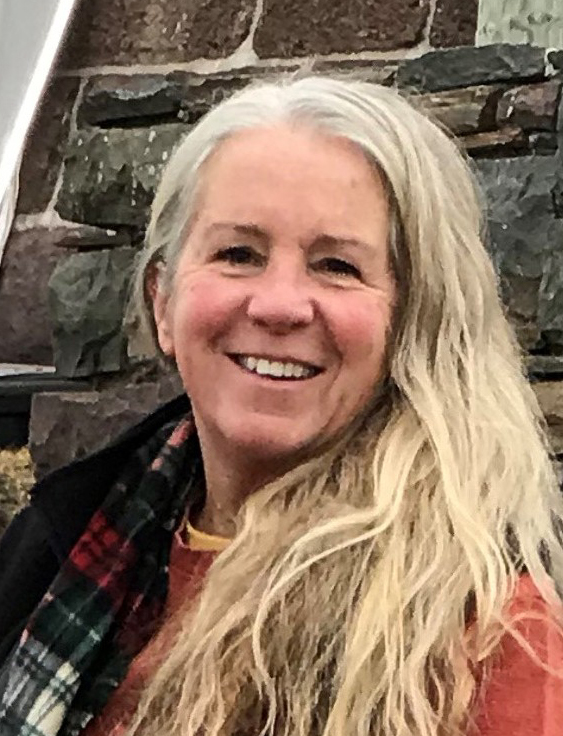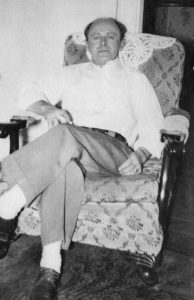When the time comes for me to plunge into my Boston Irish Catholic ancestry – my Tierneys, Quinlans, Sweeneys, and Kellards – I intend to make full use of the Catholic parish records that are currently being digitized by the historic collaboration between NEHGS and the Archdiocese of Boston. Until that time, I am comforted in knowing that these precious records are safely ensconced online, for all eternity, ready at the click of the mouse.
Which doesn’t mean that I haven’t already been dabbling in a few things Catholic. Indeed, my current project took me to Braintree, Massachusetts, to the Archives of the Archdiocese of Boston (www.bostoncatholic.org/Archives) in search of answers about my Protestant grandfather, John Osborne, he of stern Puritan stock, who, we were always told, had been orphaned at a young age.
It’s a long story, but my grandfather, his brother, and their sister were removed from their Salem home in January 1907 and placed with the Home for Destitute Catholic Children (HDCC). The Home, staffed by the Sisters of Charity, then occupied an imposing Gothic building on Harrison Avenue in Boston, now the site of the Boston University Medical Building.
The HDCC was not solely an orphanage; it also functioned as a temporary home for children whose parents could not care for them. In fact, in the majority of cases, both parents were living. Children were referred to the Home by family members, neighbors, the Catholic network of priests, and by non-Catholic agencies such as the Massachusetts Society for the Prevention of Cruelty to Children, the agency that referred my grandfather and his siblings.
The HDCC was not solely an orphanage; it also functioned as a temporary home for children whose parents could not care for them.
Founded in 1864 by a group of Catholic lay and clerical leaders who gathered to “confer together on the wants, spiritual and corporal, of the Destitute Roman Catholic Children of the City, and to devise a plan, by which at least a partial remedy for the evils existing among them might be applied,” the HDCC directors viewed their mission as rescuing children from the “twin dangers” of corporal suffering – poverty, illness, neglect, and intemperance – and the spiritual danger of Protestant proselytizing.
Despite my great-grandfather’s declaration in family court that his children were Protestant, my grandfather and his brother were baptized in the Catholic Church just weeks after arriving at the Home. Their sister, in a fragile condition when she was removed from the family home, had been sent to St. Mary’s Infant Asylum in Dorchester, where she died on 9 March 1907.
It was my good luck that when I began researching my grandfather’s life there was a website, now discontinued, for the Home for Destitute Catholic Children. The website directed all inquiries to the Labouré Center, now Catholic Charities, in South Boston, where the records of the HDCC, which closed in 1954, were archived. Over its 85 years of operation, more than 45,000 children had been served by the Home.
Despite the website noting that records were very scant, I sent an email inquiring about my grandfather. To my utter surprise, there were records for my grandfather and his brother. The information that I received from the Labouré Center proved to be a linchpin in my research, opening the floodgates to what ultimately became a full and detailed understanding of my grandfather’s childhood and family life.
To my utter surprise, there were records for my grandfather and his brother.
In August 2017, the Archives of the Archdiocese of Boston received the original ledgers of the Home for Destitute Catholic Children from the Labouré Center, and it was those ledgers that brought me to Braintree, to the Pastoral Center at 66 Brooks Drive. The comfortable reading room is a welcoming space for researchers undertaking both scholarly and genealogical study. Appointments are required.
I was provided with a finding aid for the Home’s records that include annual reports, financial reports, minutes of executive meetings, and, most pertinent for me and anyone searching for a family member who may have spent time at the Home, transaction logs. The large, handwritten volumes are organized by date and include details of the children under care, their ins and outs, their discharges and illnesses. Often, in all-too-heartbreaking terms, the reason for a child’s return to the Home from his or her foster family is stated bluntly.
How, you may wonder, did I first learn about the Home for Destitute Catholic Children? I stumbled upon it in the wee hours of the morning while reading Peter Holloran’s book, Boston’s Wayward Children: Social Services for Homeless Children, 1830–1930. He wrote about a Catholic “asylum” in Boston, a temporary home and child-placing agency. I had no reason to believe that my “Puritan” grandfather had spent time at the Home, but the convenience of email makes it too easy to not follow up on any possible lead, however improbable that lead may be. In my case, the longest of shots paid off handsomely.
Perhaps it was divine intervention.
Share this:

About Amy Whorf McGuiggan
Amy Whorf McGuiggan recently published Finding Emma: My Search For the Family My Grandfather Never Knew; she is also the author of My Provincetown: Memories of a Cape Cod Childhood; Christmas in New England; and Take Me Out to the Ball Game: The Story of the Sensational Baseball Song. Past projects have included curating, researching, and writing the exhibition Forgotten Port: Provincetown’s Whaling Heritage (for the Pilgrim Monument and Provincetown Museum) and Albert Edel: Moments in Time, Pictures of Place (for the Provincetown Art Association and Museum).View all posts by Amy Whorf McGuiggan →
